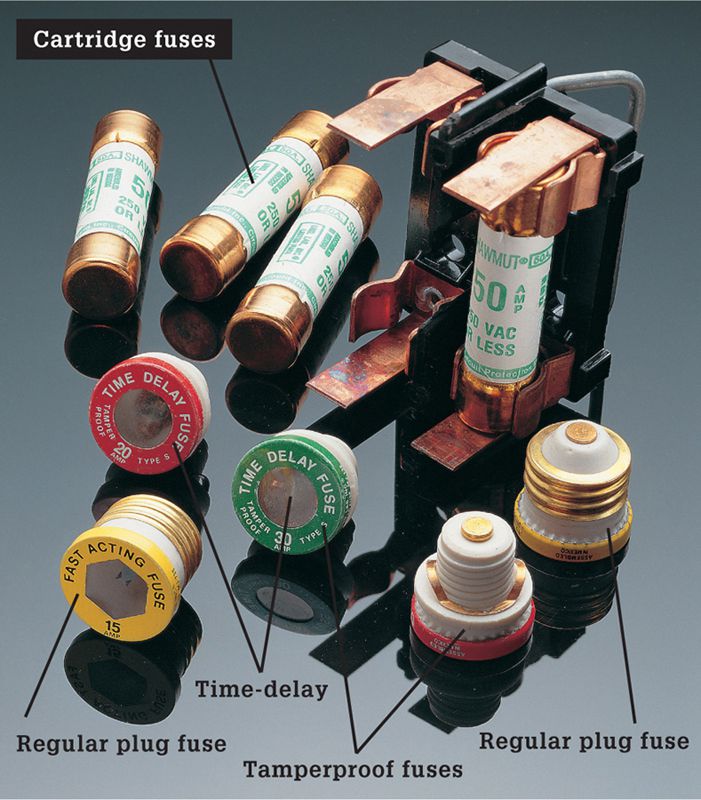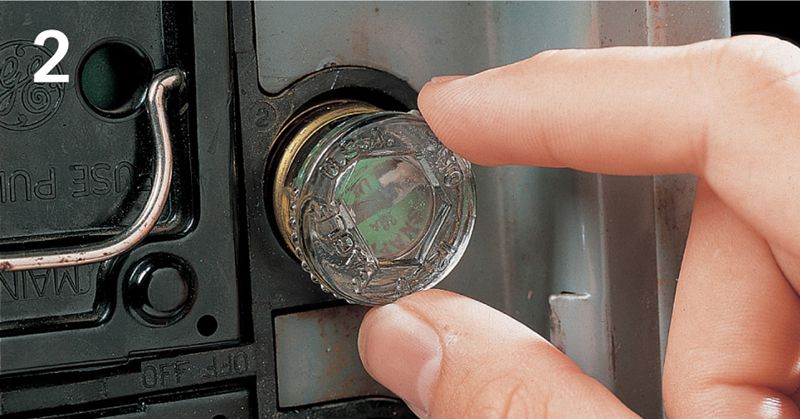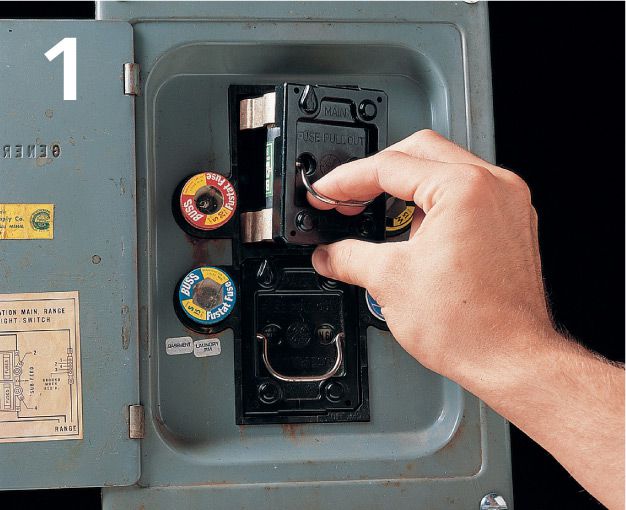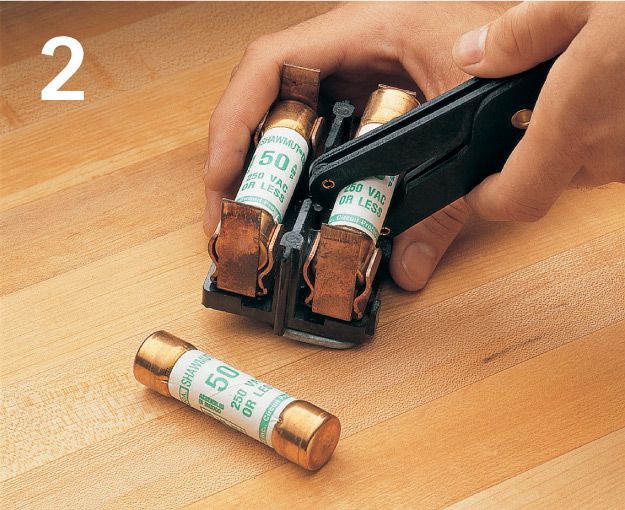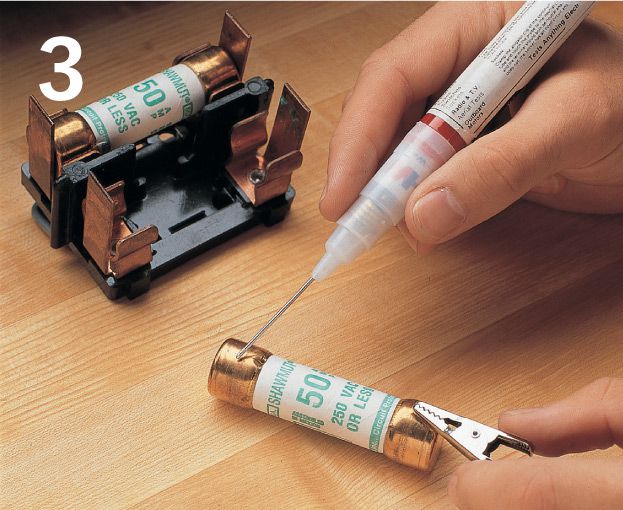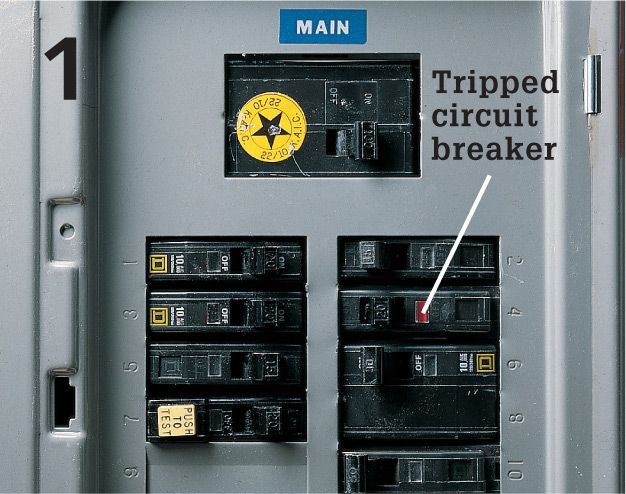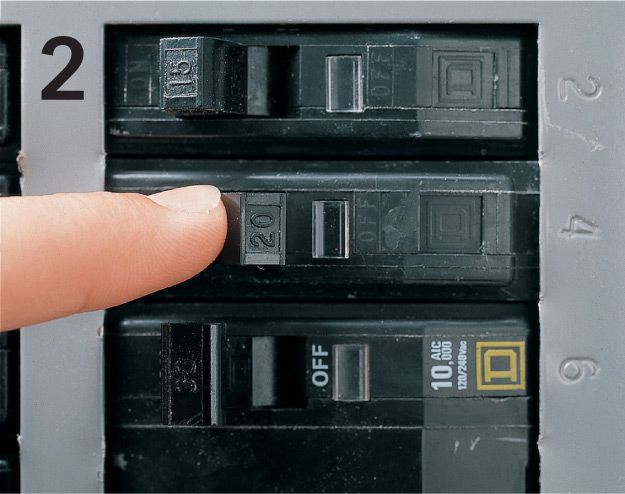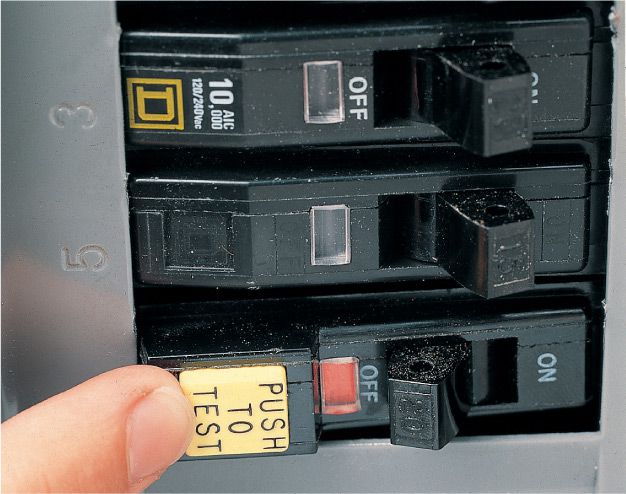WIRING
CIRCUIT BREAKERS & FUSES
The circuit breaker panel is the electrical distribution center for your home. It divides the current into branch circuits that are carried throughout the house. Each branch circuit is controlled by a circuit breaker that protects the wires from dangerous current overloads. When installing new circuits, the last step is to connect the wires to new circuit breakers at the panel. Working inside a circuit breaker panel is not dangerous if you follow basic safety procedures. Always shut off the main circuit breaker and test for power before touching any parts inside the panel, and never touch the service wire lugs. If unsure of your own skills, hire an electrician to make the final circuit connections. (If you have an older electrical service with fuses instead of circuit breakers, always have an electrician make these final hookups.)
If the main circuit breaker panel does not have enough open slots to hold new circuit breakers, install a subpanel. This job is well within the skill level of an experienced do-it-yourselfer, although you can also hire an electrician to install the subpanel.
Before installing any new wiring, evaluate your electrical service to make sure it provides enough current to support both the existing wiring and any new circuits. If your service does not provide enough power, have an electrician upgrade it to a higher amp rating. During the upgrade, the electrician will install a new circuit breaker panel with enough extra breaker slots for the new circuits you want to install.
 FUSES & CIRCUIT BREAKERS
FUSES & CIRCUIT BREAKERS
Fuses and circuit breakers are safety devices designed to protect the electrical system from short circuits and overloads. Fuses and circuit breakers are located in the main service panel.
Most service panels installed before 1965 rely on fuses to control and protect individual circuits. Screw-in plug fuses protect 120-volt circuits that power lights and receptacles. Cartridge fuses protect 240-volt appliance circuits and the main shutoff of the service panel.
Inside each fuse is a current-carrying metal alloy ribbon. If a circuit is overloaded, the metal ribbon melts and stops the flow of power. A fuse must match the amperage rating of the circuit. Never replace a fuse with one that has a larger amperage rating.
In most service panels installed after 1965, circuit breakers protect and control individual circuits. Single-pole circuit breakers protect 120-volt circuits, and double-pole circuit breakers protect 240-volt circuits. Amperage ratings for circuit breakers range from 15 to 100 amps.
Each circuit breaker has a permanent metal strip that heats up and bends when voltage passes through it. If a circuit is overloaded, the metal strip inside the breaker bends enough to “trip” the switch and stop the flow of power. Circuit breakers are listed to trip twice. After the second trip they weaken and tend to nuisance trip at lower currents. Replace breakers that have tripped more than twice—they may fail. Worn circuit breakers should be replaced by an electrician.
When a fuse blows or a circuit breaker trips, it is usually because there are too many light fixtures and plug-in appliances drawing power through the circuit. Move some of the plug-in appliances to another circuit, then replace the fuse or reset the breaker. If the fuse blows or the breaker trips again immediately, there may be a short circuit in the system. Call a licensed electrician if you suspect a short circuit.
Circuit breakers are found in the majority of panels installed since the 1940s. Single-pole breakers control 120-volt circuits. Double-pole breakers rated for 20 to 60 amps control 240-volt circuits. Ground-fault circuit interrupter (GFCI) and arc-fault circuit interrupter (AFCI) breakers provide protection from shocks and fire-causing arcs for the entire circuit.
Fuses are used in older service panels. Plug fuses usually control 120-volt circuits rated for 15, 20, or 30 amps. Tamper-proof plug fuses have threads that fit only matching sockets, making it impossible to install a wrong-sized fuse. Time-delay fuses absorb temporary heavy power loads without blowing. Cartridge fuses control 240-volt circuits and range from 30 to 100 amps.
 HOW TO IDENTIFY & REPLACE A BLOWN PLUG FUSE
HOW TO IDENTIFY & REPLACE A BLOWN PLUG FUSE
Locate the blown fuse at the main service panel. If the metal ribbon inside is cleanly melted (right), the circuit was overloaded. If window is discolored (left), there was a short circuit.
Unscrew the fuse, being careful to touch only the insulated rim of the fuse. Replace it with a fuse that has the same amperage rating.
 HOW TO REMOVE, TEST & REPLACE A CARTRIDGE FUSE
HOW TO REMOVE, TEST & REPLACE A CARTRIDGE FUSE
Remove cartridge fuses by gripping the handle of the fuse block and pulling sharply.
Remove the individual cartridge fuses from the block using a fuse puller.
Test each fuse using a continuity tester. If the tester glows, the fuse is good. If not, install a new fuse with the same amperage rating.
 HOW TO RESET A CIRCUIT BREAKER
HOW TO RESET A CIRCUIT BREAKER
Open the service panel and locate the tripped breaker. The lever on the tripped breaker will be either in the OFF position, or in a position between ON and OFF.
Reset the tripped circuit breaker by pressing the circuit breaker lever all the way to the OFF position, then pressing it to the ON position.
Test AFCI and GFCI circuit breakers by pushing the TEST button. The breaker should trip to the OFF position. If not, the breaker is faulty and must be replaced by an electrician.





